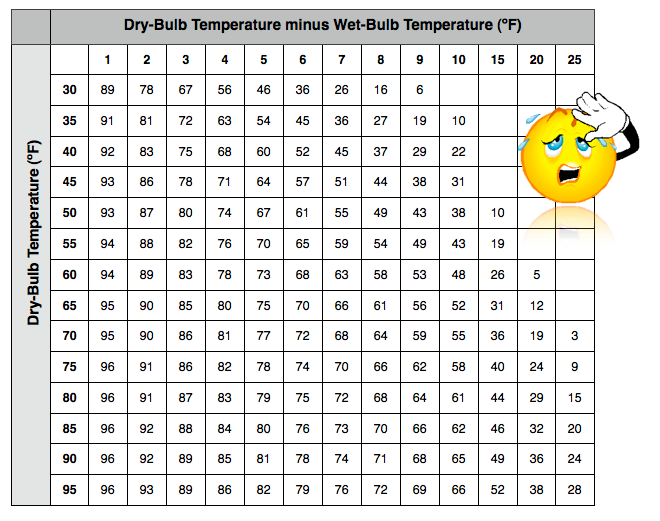Relative Humidity Exercise
How Wet is the Air?
Grade 4-8 Lesson Plan
The air is filled with invisible water vapor, but how much? You may be more familiar with the term "humidity" and this tool will allow you to measure relative humidity to find out just how much invisible water vapor is in the air today.
Teacher Information
Grade Level: 4-8
Subject Area: Earth Science
Curriculum Focus: atmospheric science, meteorology, relative humidity
The following materials are needed:
- Cup or Pint sized milk carton; empty and clean
- Water
- Two small thermometers
- Cotton balls, cotton shoelace or gauze
- String
- Clear tape
Here's how to do it:
- Tape the cotton ball (or other cotton material) over the bulb of the thermometer
- Tape the thermometer to the side of the cup and get the cotton ball wet
- Tape the second thermometer (no cotton on tip) to the other side of the cup
- Punch a small hole in the top of the cup, thread the string through the hole and tie s not so the string can not be pulled back out, you-ll need about a 2- length form the cup
- Go outside and swing the cup around, at waist hight, like you are twirling a lasso
- Do this for one minute
- Quickly look at the temperatures on both thermometers and write them down
What's Going On?
Main Take-Away Point: The temperature of the thermometer with the wet bulb is always lower that the temperature of the dry thermometer bulb. This is because water is evaporating from the wet bulb thermometer and cooling it down. The drier the surrounding air, the faster the wet cotton ball will be evaporating, bringing the temperature down as it evaporates. The more humid the surround air is, the less evaporation will occur, keeping the two thermometer temperatures closer together.
The difference between the two temperatures gives a clue to the amount of water in the air. The bigger the temperature difference, the drier that air. The relative humidity (RH) is 100% when it-s raining and almost 0% the driest deserts.
But Wait, There's More!
Use the chart given here to calculate the relative humidity of the air.

Questions
- What is the relative humidity today? ___________%
- Does is feel any more or less humid than it felt yesterday? _______________
- What is the relative humidity for each day of the week?
- Monday _____% Tuesday _____% Wednesday _____% Thursday _____% Friday _____%
- Was it raining on any day that you tested for relative humidity? If so, indicate the day(s) and the relative humidity?
- Why does the wet cotton ball thermometer cool more in dryer air?
- Now that you have your own data set from a weeks worth of testing for relative humidity, can you see why collecting data for a long time would be helpful? Explain:
- Where in the world would you expect to have a relative humidity of close to 100%? What about close to 0%?
- Did others in your group get different values? Identify some some sources of error or biases that would cause such variations in your data collection.
- Now that you know some things about relative humidity (water vapor in the air), name three ways it affects your daily life and the environment in which you live.
Related Links & Resources
- VIDEO: EOL Youtube Channel
- COMET (Free Login Required): Introduction to Tropical Meteorology
Credits
- National Center for Atmospheric Research/Earth Observing Laboratory
- National Science Foundation
- PREDICT Science & Support Team
- Developed by UCAR Center for Science Education with additions from Alison Rockwell & Kate Young